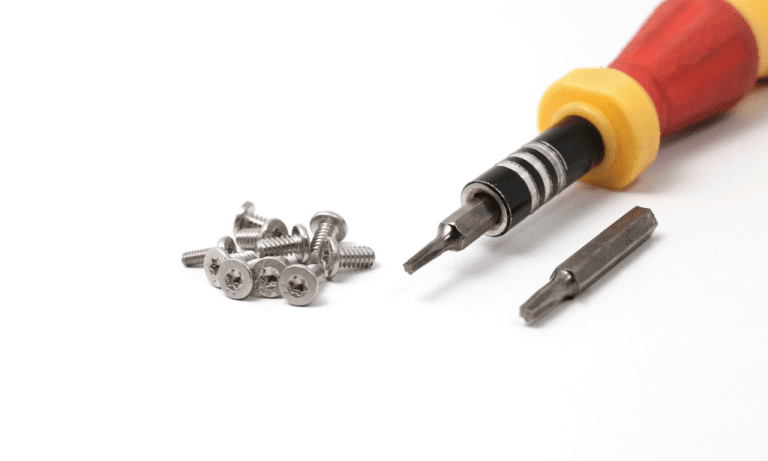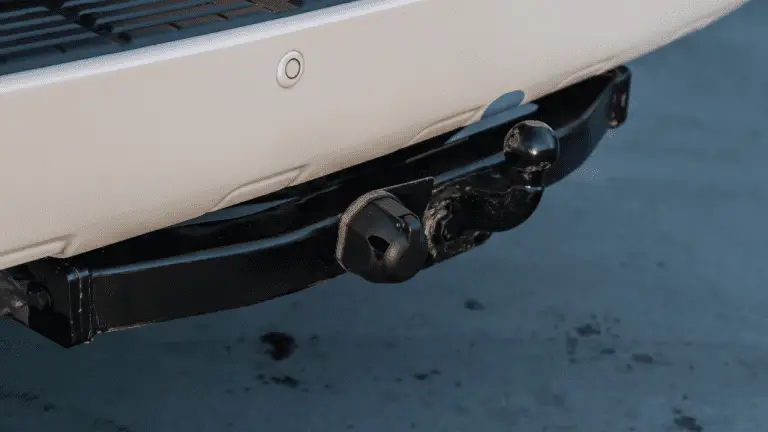What Happens When Cam Phasers Go Bad? (With Solved)
When cam phasers go bad, it can cause a range of issues with your engine’s performance. Let me walk you through exactly what happens.
First off, you might notice a decrease in engine power and efficiency. This is because cam phasers play a crucial role in controlling the timing of your engine’s valves. When they malfunction, the timing can become out of sync, leading to poor fuel combustion and reduced power output.
Secondly, you may experience rough idling or even stalling. Cam phasers help regulate the airflow into the engine, and when they go bad, the engine may struggle to maintain a steady idle speed. This can result in a rough, shaky feeling when the car is at a standstill and may even cause it to stall altogether.
Another common symptom is strange noises coming from the engine. Faulty cam phasers can produce knocking or rattling sounds, especially at higher RPMs. This noise is often caused by the phasers not properly adjusting the camshaft timing, leading to components hitting against each other.
Additionally, you might notice a decrease in fuel efficiency. When the cam phasers aren’t functioning correctly, the engine has to work harder to compensate for the timing discrepancies. This increased workload can lead to higher fuel consumption and ultimately cost you more at the pump.
Lastly, if left untreated, a bad cam phaser can cause significant damage to your engine. Timing issues can put excessive stress on various engine components, leading to premature wear and potential failure. Ignoring the problem can result in costly repairs down the line.
What Are Cam Phasers
Cam phasers are vital components of your engine’s timing system. Let me break down exactly what they are and how they work.
Essentially, cam phasers are responsible for adjusting the timing of the camshafts in your engine. They ensure that the valves open and close at the precise moment required for optimal engine performance. This timing is crucial for proper fuel combustion, power delivery, and overall efficiency.
Cam phasers operate using oil pressure and hydraulic mechanisms. They can adjust the position of the camshaft relative to the crankshaft, allowing for changes in valve timing as needed. This adjustment is necessary to optimize engine performance across different operating conditions, such as low-speed cruising or high-speed acceleration.
One of the key functions of cam phasers is to control variable valve timing (VVT). This technology allows the engine to adjust the timing of the intake and exhaust valves dynamically. By varying valve timing, the engine can optimize performance, emissions, and fuel efficiency across a range of driving conditions.
In modern engines, cam phasers are typically controlled by the engine’s computer system. This allows for precise and real-time adjustments based on factors such as engine speed, load, and temperature. The computer monitors various sensors to determine the optimal camshaft timing for current driving conditions and adjusts the phasers accordingly.
Overall, cam phasers play a crucial role in ensuring that your engine operates efficiently and performs at its best. They allow for dynamic control of valve timing, which translates into improved power delivery, fuel efficiency, and overall driving experience. Without cam phasers, your engine would struggle to adapt to different driving conditions and might not perform as efficiently or smoothly.
Symptoms of Bad Cam Phasers
1. Loss of Engine Power
Experiencing a loss of engine power is a clear indication that something might be amiss with your cam phasers. Let me explain exactly what’s happening.
When cam phasers go bad, they can disrupt the precise timing of your engine’s valves, leading to inefficient fuel combustion. This inefficiency translates directly into a loss of engine power. You might notice that your vehicle feels sluggish or struggles to accelerate, especially when you need that extra burst of speed. This is because the cam phasers play a crucial role in controlling when the valves open and close, affecting how air and fuel enter the combustion chambers. When their timing is off, the engine doesn’t generate the power it should, resulting in a noticeable decrease in performance.
If you’re experiencing a loss of engine power, it’s essential to have your vehicle inspected by a qualified mechanic. Ignoring this symptom could lead to further issues down the road and potentially more expensive repairs. By addressing the problem early on, you can ensure that your engine operates at its best and that you enjoy optimal performance behind the wheel.
2. Increased Fuel Consumption
Experiencing increased fuel consumption can be frustrating and costly, and it’s often a sign that your cam phasers may be failing. Let me explain how this happens in detail.
When cam phasers go bad, they can disrupt the precise timing of your engine’s valves, leading to inefficient fuel combustion. This inefficiency means that your engine needs to burn more fuel to produce the same amount of power. As a result, you’ll notice that you’re visiting the gas station more frequently and spending more money on fuel. Essentially, the engine is working harder than it should be due to the timing discrepancies caused by the malfunctioning cam phasers. This increased workload not only leads to higher fuel consumption but also puts additional strain on other engine components.
If you’ve noticed a significant increase in fuel consumption, it’s crucial to have your vehicle inspected by a qualified mechanic. Ignoring this symptom can lead to further issues and potentially more expensive repairs down the line. By addressing the problem promptly, you can not only save money on fuel but also ensure that your engine operates efficiently and reliably.
3. Check Engine Light
Seeing the check engine light illuminate on your dashboard can be concerning, and it could indicate a problem with your cam phasers. Let’s delve into why this might be happening.
When cam phasers start to fail, it can disrupt the timing of your engine’s valves, leading to issues that trigger the check engine light. This warning light is connected to your vehicle’s onboard diagnostics system, which monitors various sensors and engine components for any abnormalities. If the system detects a problem with the cam phasers or related components, it will illuminate the check engine light to alert you to the issue.
Keep in mind that while the check engine light can indicate a problem with the cam phasers, it can also be triggered by a wide range of other issues. Therefore, it’s essential to have your vehicle’s diagnostic codes read by a qualified mechanic to pinpoint the exact cause of the warning light. Ignoring the check engine light could lead to further damage to your engine or other critical components, so it’s best to address the issue promptly.
4. Rough Running
Experiencing rough running or a rough idle in your vehicle can be unsettling, and it’s often a sign that your cam phasers may be failing. Let me explain why this might be happening.
When cam phasers start to go bad, they can disrupt the precise timing of your engine’s valves, leading to irregular combustion and erratic engine behavior. This can manifest as rough running, where the engine feels shaky or unstable, especially when idling or at low speeds. Essentially, the timing discrepancies caused by malfunctioning cam phasers can throw off the engine’s balance, resulting in a rough and uneven running condition.
If you’re experiencing rough running, it’s essential to have your vehicle inspected by a qualified mechanic. Ignoring this symptom could lead to further issues down the line and potentially more expensive repairs. By addressing the problem promptly, you can ensure that your engine runs smoothly and reliably, providing you with a better driving experience.
5. Reduced Performance
Experiencing reduced performance in your vehicle can be frustrating, and it’s often a sign that your cam phasers may be failing. Let’s explore why this might be happening in more detail.
When cam phasers start to deteriorate, they can disrupt the precise timing of your engine’s valves, leading to inefficient combustion and decreased power output. This means that your vehicle may feel sluggish or struggle to accelerate, especially during acceleration or when climbing hills. Essentially, the timing discrepancies caused by malfunctioning cam phasers can prevent the engine from operating at its full potential, resulting in reduced performance overall.
If you’ve noticed a significant decrease in performance, it’s crucial to have your vehicle inspected by a qualified mechanic. Ignoring this symptom could lead to further issues down the line and potentially more expensive repairs. By addressing the problem promptly, you can ensure that your vehicle operates at its best and that you enjoy optimal performance behind the wheel.
6. Throttle Surge
Experiencing throttle surge in your vehicle can be concerning, and it could indicate a problem with your cam phasers. Let’s delve into why this might be happening.
When cam phasers begin to fail, they can disrupt the precise timing of your engine’s valves, leading to erratic throttle response. This can manifest as throttle surge, where you feel sudden and unexpected increases or decreases in engine power, especially when you press or release the accelerator pedal. Essentially, the timing discrepancies caused by malfunctioning cam phasers can cause the engine to receive incorrect signals, resulting in irregular throttle behavior.
If you’re experiencing throttle surge, it’s essential to have your vehicle inspected by a qualified mechanic. Ignoring this symptom could lead to further issues down the line and potentially more expensive repairs. By addressing the problem promptly, you can ensure that your vehicle operates smoothly and reliably, providing you with a safer and more enjoyable driving experience.
Why Do Cam Phasers Go Bad?
Understanding why cam phasers go bad can help you take better care of your vehicle. Let’s explore the reasons behind this issue in detail.
Firstly, one common reason for cam phaser failure is wear and tear over time. Like any mechanical component, cam phasers can experience deterioration due to constant use, exposure to heat, and engine oil contamination. Over time, the internal components of the phasers may wear down or become damaged, leading to malfunction.
Secondly, inadequate lubrication or oil quality can contribute to cam phaser problems. Cam phasers rely on engine oil for proper lubrication and operation. If the engine oil is not changed regularly or if low-quality oil is used, it can lead to increased friction and wear on the phaser components. Poor lubrication can also cause oil passages within the phasers to become blocked, affecting their performance.
Another factor that can cause cam phasers to go bad is engine overheating. Excessive heat can damage the delicate internal components of the phasers, causing them to malfunction. Engine overheating can be caused by a variety of factors, such as coolant leaks, a faulty thermostat, or a malfunctioning cooling fan. Overheating can accelerate wear and deterioration of the cam phasers, leading to premature failure.
Additionally, poor maintenance practices or neglect can contribute to cam phaser issues. If routine maintenance tasks, such as oil changes and inspections, are not performed regularly, it increases the risk of problems with the cam phasers going unnoticed. Neglecting to address other engine issues promptly, such as coolant leaks or worn timing components, can also indirectly affect the health of the cam phasers.
How to Replace Cam Phasers?
Replacing cam phasers is a complex task, but with the right knowledge and tools, it can be done effectively. Let me guide you through the process step by step.
Firstly, start by gathering all the necessary tools and materials for the job. You’ll need a set of wrenches and sockets, a torque wrench, a camshaft locking tool, gaskets, and of course, the replacement cam phasers. Make sure you have a clean and well-lit workspace to work in.
Next, begin by disconnecting the battery to prevent any electrical mishaps during the replacement process. Then, remove any components that obstruct access to the cam phasers, such as the valve covers and timing chain cover.
Once you have clear access to the cam phasers, use the camshaft locking tool to secure the camshafts in place. This will prevent them from moving while you remove the old phasers and install the new ones.
Now, carefully remove the bolts securing the old cam phasers to the camshafts, taking care not to damage the surrounding components. Once the old phasers are removed, clean the mounting surfaces thoroughly to ensure a proper seal for the new phasers.
Next, install the new cam phasers onto the camshafts, making sure they are properly aligned and seated. Use the torque wrench to tighten the mounting bolts to the manufacturer’s specifications.
With the new cam phasers in place, reassemble any components that were removed earlier, such as the valve covers and timing chain cover. Double-check all connections and ensure everything is properly tightened.
Finally, reconnect the battery and start the engine to verify that the new cam phasers are functioning correctly. Listen for any abnormal noises or vibrations and check for any leaks around the phaser mounting points.
Frequently Asked Questions
What are cam phasers?
Cam phasers are components in an engine’s timing system that control the timing of the camshafts. They adjust the position of the camshaft relative to the crankshaft, allowing for changes in valve timing as needed. This adjustment helps optimize engine performance across different operating conditions.
What happens when cam phasers go bad?
When cam phasers go bad, several issues can arise. Common symptoms include loss of engine power, rough idling or stalling, unusual engine noises, increased fuel consumption, and reduced performance. If left untreated, cam phaser failure can lead to more severe damage to the engine.
What causes cam phasers to fail?
Several factors can contribute to cam phaser failure, including wear and tear over time, inadequate lubrication or oil quality, engine overheating, and poor maintenance practices or neglect. These factors can lead to damage to the internal components of the cam phasers, resulting in malfunction.
How can I tell if my cam phasers are failing?
There are several signs that indicate your cam phasers may be failing. These include loss of engine power, rough running or rough idle, unusual engine noises, increased fuel consumption, reduced performance, throttle surge, and the illumination of the check engine light. If you experience any of these symptoms, it’s essential to have your vehicle inspected by a qualified mechanic.
Can I drive with bad cam phasers?
While it may be possible to drive with bad cam phasers for a short period, it’s not recommended. Continuing to drive with failing cam phasers can lead to further damage to the engine and potentially more expensive repairs. It’s best to have the issue addressed promptly by a qualified mechanic to avoid further complications.
How are cam phasers replaced?
Replacing cam phasers is a complex task that requires specialized knowledge and tools. The process involves disconnecting the battery, removing components obstructing access to the phasers, securing the camshafts in place, removing the old phasers, cleaning the mounting surfaces, installing the new phasers, reassembling the components, and verifying proper operation. It’s recommended to consult a professional mechanic for cam phaser replacement.
- Why Are My Car Headlights Not Bright Enough? - May 9, 2024
- How Long Can You Drive With An EVAP Leak? - May 9, 2024
- What Does B Stand for in a Car? [Full Guide] - May 9, 2024

![What Size Are License Plate Screws? [Choose the Right Size]](https://automhelp.com/wp-content/uploads/2023/06/License-Plate-Screw-Size-768x462.jpg)


![Can You Drive Without a Catalytic Converter? [Uncover the Truth]](https://automhelp.com/wp-content/uploads/2023/07/How-Much-Horsepower-Does-a-Turbo-Add-1-768x461.png)

